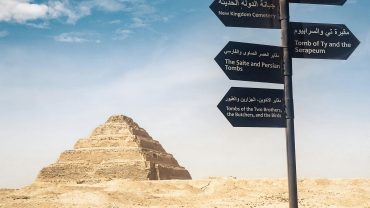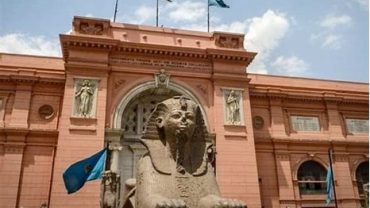The Giza Pyramids are not just Egypt’s most famous landmarks—they are global icons of human history, architecture, and ancient civilization. Located just outside Cairo, on the edge of the desert, the Giza Plateau is home to the last surviving wonder of the ancient world, and it continues to inspire awe and mystery to this day.
The Great Pyramid of Khufu – The Last Ancient Wonder Standing
At the heart of the Giza complex stands the Great Pyramid of Khufu, also known as the Pyramid of Cheops. Built around 2560 BC, it is the largest and oldest of the three main pyramids. Rising to an original height of 146 meters (now 138 meters), it was the tallest man-made structure in the world for over 3,800 years. The sheer scale and precision of the pyramid leave visitors speechless—over 2.3 million limestone blocks were used in its construction, each weighing between 2 to 15 tons.
Walking around its base, you’ll feel the power of ancient Egyptian engineering and wonder how such a colossal monument was built without modern technology. For those looking for a deeper experience, entrance tickets are available to explore the internal chambers—steep, narrow tunnels that lead into the heart of history itself.
The Pyramid of Khafre and the Pyramid of Menkaure
Just beside Khufu’s masterpiece lies the Pyramid of Khafre, slightly smaller in height but elevated on higher ground, giving it an equally imposing presence. It’s also the only pyramid that still retains a portion of its original smooth white limestone casing near the top—a reminder of how these monuments once gleamed in the sun.
The third and smallest of the three, the Pyramid of Menkaure, may not match the others in size, but it stands out in design and historical significance. Together, the three pyramids form a perfect alignment with the stars, reinforcing the connection between Egyptian architecture and celestial beliefs.
The Great Sphinx – Guardian of the Plateau
No trip to Giza is complete without standing in front of the Great Sphinx. This colossal statue, measuring 73 meters long and 20 meters high, has the body of a lion and the head of a man—believed to represent Pharaoh Khafre. The Sphinx is one of the oldest and largest monolithic statues in the world, transferved directly from the bedrock of the plateau.
Mystery surrounds the Sphinx. From its missing nose to debates about its true age, the statue has inspired scholars and travelers for centuries. When you stand before it, with the pyramids behind, the moment feels frozen in time.
What to Expect During Your Visit
The Giza Plateau is a full-day experience. Visitors can walk around the site, ride camels or horses, or even book a guided tour with expert Egyptologists. The best times to visit are early morning or just before sunset when the light softens and the desert wind cools.
Don’t forget to stay for the Giza Sound and Light Show—an unforgettable evening performance where the pyramids and the Sphinx are illuminated, and the history of ancient Egypt is brought to life through lights, music, and storytelling.
Why the Giza Pyramids Should Be on Every Traveler’s Bucket List
The Pyramids of Giza and the Great Sphinx are not just tourist attractions—they are testaments to human ambition, spiritual belief, and cultural identity. Whether you are a history lover, an adventurer, or simply someone in search of awe-inspiring places, Giza will leave an imprint on your soul.
This is where the past still speaks, and every stone tells a story that echoes across millennia.




Comment (0)